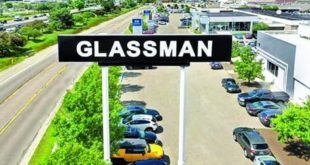
Data sets that auto lenders typically use to determine who is creditworthy have been upended by the fallout of the coronavirus, consumer credit experts say.
As a result, lenders concerned with loan losses and fraud have clamped down on access for customers they believe pose more risk to their business. Subprime customers, with credit scores typically below 620, especially are having a harder time getting approved and dealers say that customers on unemployment are being rejected out of hand.
To make matters worse, sorting through the confusion prompted by massive job losses and unprecedented federal intervention could take years for lenders as the industry struggles to compete in a market with wild swings in supply and demand. This means over the long term that lenders could increasingly be exposed to potential losses and limited in taking on new business while they grapple with who is creditworthy.
The federal government’s pandemic provisions protect consumer credit scores, preventing lenders from counting negative information against potential customers. Credit standards remain tight as lenders navigate the uncertain circumstances sparked by the pandemic.
Credit tightening for subprime borrowers began in April and continued into May, said Jonathan Smoke, chief economist at Cox Automotive, noting declining approval rates for automotive loans and the shift in credit distribution toward those in higher tiers.
Subprime consumers made up 8.8 percent of the market in May and June, Smoke said, citing Equifax data. That’s down from 14 percent in May and June of 2019.
“You’re particularly making it more difficult and less attractive for subprime people to get a loan,” Smoke said. “You’re limiting nearly a quarter of consumers.”
Sorting out who is creditworthy has been more of a challenge during the pandemic than in previous downturns. Americans weren’t provided the same tools, including stimulus checks and enhanced unemployment benefits, during the financial crisis of 2008. Therefore, consumers found themselves in delinquent status before they could get assistance.
Provisions of the rapidly deployed Coronavirus Aid, Relief, and Economic Security Act shielded consumer credit portfolios from negative data, including missed and late payments on existing credit products. Millions of consumers have taken advantage of these benefits since March, particularly with automotive bills.
Automotive accounts in financial hardship status — which could mean a deferred payment, frozen account or frozen past-due payment — reached 7.04 percent in May, up from 3.54 percent in April.
Accounts in financial hardship aren’t expected to go delinquent and don’t have a negative impact on a person’s credit score. But lenders may have to incorporate new decisioning processes when it comes to working with consumers who have several credit products in forbearance status vs. those with just one or two.
Vladimir Kovacevic, co-founder and managing partner of Inovatec, a leading software provider to U.S. and Canadian financial institutions, said the financial hardship status may eventually need to be factored into decisioning algorithms.
For consumers with multiple products in financial hardship status, “Is there any indication … that means you’re at high risk or a lower risk?” Kovacevic said. “I don’t think anybody knows that yet.”
Joanne Gaskin, vice president of scores and analytics at credit-scoring agency Fair Isaac Corp., said the company’s scores focus primarily on a consumer’s payment history, so an unexpected job loss or financial hardship is weighed appropriately. If an unexpected job loss prevents customers from paying their bills, their credit history should provide sufficient information for a lender to make a measured decision, she said.
“We want to make certain that the model is intuitive so you’re not going to see something strange from the consumer or lender’s perspective,” Gaskin said.
In general, consumers with a history of struggling to stay current on repayment of credit products have a harder time getting approved for auto loans, said Dina Wilson, general manager and head of finance at Timbrook Kia in Cumberland, Md. About one-third of Wilson’s customers have subprime credit, she said.
“If you have a lot of bills that you aren’t paying, your risk is much higher than someone who only has medical bills they aren’t paying,” Wilson said.
Mounting unemployment during the coronavirus recession is further straining the new-vehicle market in lower credit tiers.
Geography and employment type are key when it comes to which consumers needed assistance and were exposed to job losses or job reductions. The pandemic impacted different factions of the work force than in the last recession, with jobs in entertainment, the service industry, travel and transportation being more at risk.
Some of the data lenders relied on to determine what types of jobs are considered risky won’t be useful in this environment, said Dan Faggella, founder of artificial intelligence consultancy Emerj. The influx of new information likely will hinder accurate decisioning processes at auto lenders.
“It’s obviously going to tilt the keel of the entire economic ballgame,” Faggella said. “Because of that, our historical data about who has been more likely to pay or not pay may be much less trustable with machine learning algorithms because we’re now dealing with a new normal.”
Chevrolet dealer David Vara said there hasn’t been much of a noticeable change in how the lenders that work with his store in San Antonio want deals constructed. But he has noticed lenders more frequently asking for proof of employment — even for customers with credit scores above 700.
“If you have more people out of work, you’re going to have less sales,” Vara said. “But if anything, lenders are going to be more aggressive because there’s less business.”
Government stimulus has boosted the buying power of many American consumers. But for those assisted by the extra unemployment cash, lenders aren’t willing to take the gamble.
Wilson said several of her customers applying for auto loans on unemployment have been rejected outright by subprime auto lenders — even the larger, more established lenders.
“We’re having a harder time getting them bought,” Wilson said. “In this area, you have people making more money on unemployment than on the job. From the lender side, they’re saying, ‘What if their job’s not there when they get back?’ ”


